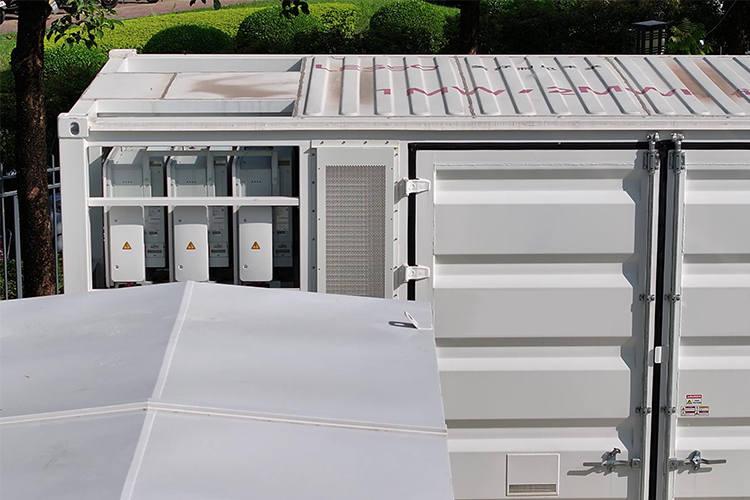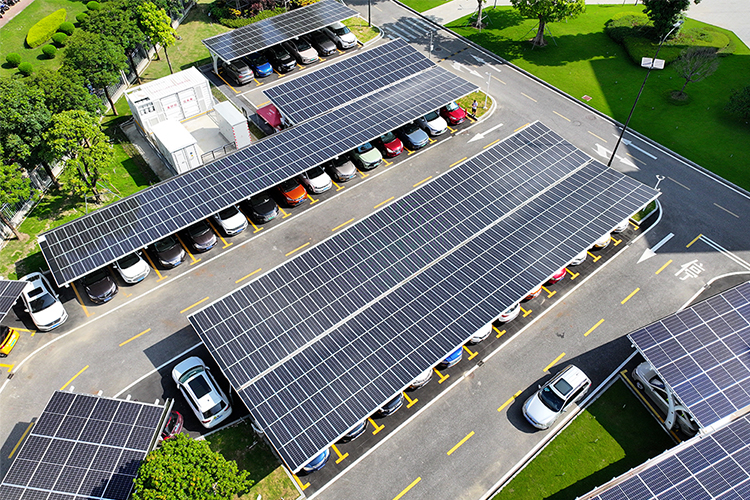The transformer's applicability in the energy storage sector is significant since it can increase the overall power generating efficiency of solar, wind, and other new energy generation projects. Additionally, it can be used with the power grid and the power consumption side to provide peak and valley arbitrage, energy conservation, pollution reduction, and supply and demand regulation. We shall quickly review a number of the energy storage project's key application possibilities below.
1. Parks as Energy Storage Facilities
High energy consumption, high power consumption, and long-term high load complexity are characteristics of industrial parks. Machines have varying working time cycles, which can lead to an excessive or inadequate power supply. To balance the supply and demand, an energy storage system is necessary. During regular business hours, power is gathered and fed into the grid via the energy storage system. In an emergency, however, emergency power can be supplied to guarantee the park's machinery runs normally. Additionally, peaks and troughs can be arbitraged using the variation in electricity prices.
2. Industry-Grade Complex Energy Storage
Commercial buildings use electricity for energy-saving, energy-storage, and energy-charging purposes, and they are mostly used during the day. Energy storage equipment stores electricity to lessen reliance on the power grid, power generation equipment is used for charging, and energy-saving equipment minimizes energy use.

3. Energy storage in data centers
Although low-carbon data centers are the way of the future, energy storage is one method of lowering their electricity usage. Data centers are typically big consumers of electricity.
One strategy for lowering their electricity usage is energy storage. During this process, the energy storage system uses capacity deployment, peak shaving, valley filling, and other mechanisms to improve the security and stability of the power supply system as well as the economics of data center power operations and reliability. It also helps to prevent data loss due to sporadic power outages in the data center.
4. Integration of photovoltaic storage and charging
In order to ensure stable power generation of optical storage and charging plant, reduce the peak and valley difference of the load of the fast charging station, and increase system operation efficiency, energy storage is used to absorb grid power during the low valley period of photovoltaic power generation and release it during the peak period of power consumption.

5. Energy storage in 5G base stations
The intelligent peak technology used by 5G base station distribution storage allows for charging during idle time and discharging during busy time. This effectively addresses the issue of 5G base station construction being impeded by power supply issues and actively supports the deployment of 5G base stations and the advancement of 6G technology.6. Storage of energy in the home
In addition to guaranteeing the security and stability of domestic electricity use, residential energy storage can generate revenue by selling excess electricity to the power grid.
7. Energy storage using microgrids
The majority of microgrid installations occur on islands and other locations where grid transmission is challenging. In addition to providing power supply protection for island and ocean development and protection, off-grid intelligent island microgrids can help residents of islands with their energy-related issues.
8. Exploiting energy storage
In addition to protecting the power system's ability to regulate frequency, energy storage in mining areas can also be used to improve power system performance by lessening the impact of large load start-up moments and grid faults that will result in large frequency fluctuations.
9. Backup energy storage power source
An emergency energy storage power system is useful in hospital backup power, emergency rescue, and other scenarios where power protection is needed.
10. Energy storage for urban rail transit
Regenerative braking on urban rail transit cars produces a lot of regenerative power, which is then stored in the energy storage system. Examples include the subway flywheel energy storage system, which uses electric motors to drive the flywheel rotor's high-speed rotation under vacuum magnetic levitation conditions to store energy. Other examples include recycling and regeneration of electric energy and charging when the speed is lowered and discharging when it is increased.
These are the energy storage projects' application scenarios. LESSO produces reactors and transformers, which are crucial components of the energy storage project because of their efficiency, quietness, stability, and safety features. We invite you to come to the line for consultation and purchase if you have any associated demands in this field.






